Recent post
Is Your Cat Chasing His Tail? Should You Ever Worry About It?
I've seen a lot of dogs chasing their tail, so I was caught off guard when I saw a cat chasing its tail. My friend's cat, Jax, started chasing his own tail, and I wondered if Jax was copying the behavior of my friend's Golden Retriever.
Later, I found out that Jax was not a copycat. Unfortunately, he had a tail infection. So, is it a problem when you see a cat chasing its tail? What do you do when a cat is chasing its tail? Well, let's find out.
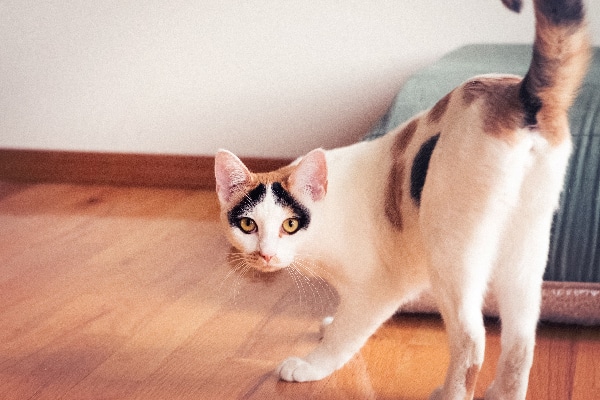
First of all, is it normal to see a cat chasing its tail?
Some cats, like dogs, chase their tail just for fun. "Some cats chase their tails just for fun, but this is less common in cats than in dogs," says Dr. Sasha Gibbons of the Just Cats Veterinary Hospital in Stamford, Connecticut.
But sometimes a cat chasing its tail means a little more in the language of the cat tail. And, unfortunately, there are times when a cat chasing its tail signals the opposite of fun.
"Cats may also chase their tail for a number of medical reasons," explains Dr. Gibbons. "Cats chase their tail if they have an infection and if the tail is uncomfortable, or if it itches due to allergies. Cats can also suffer from a condition called hyperesthesia syndrome, which is caused by hyperactivity of nerve endings, and cats feel a tingling sensation on their tails.
Another problem that could be at play and that requires the attention of the veterinarian is the stallion's tail, which is a condition of the cat's skin.
It is important to know the normal language of your cat's body and tail to ensure that your cat is not behaving abnormally for a medical reason.
What happens if a cat runs after its tail and bites it at the same time?
Make sure you have a plan of action if you notice a cat running after its tail and biting it! "Cat tails can become infected very easily and it can be difficult to resolve a tail infection. Any injury to the tail (self-inflicted) or from another cat should therefore be evaluated by a veterinarian," explains Dr. Gibbons.
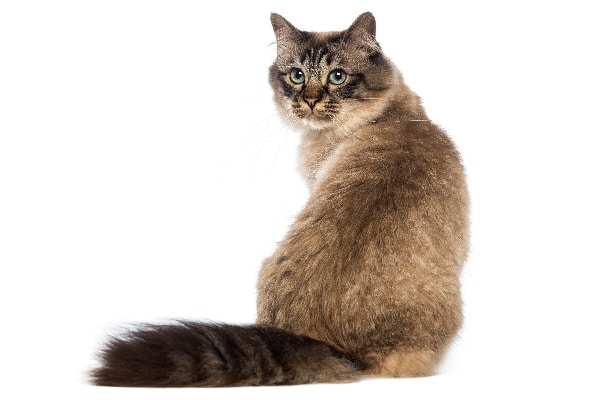
Later, I found out that Jax was not a copycat. Unfortunately, he had a tail infection. So, is it a problem when you see a cat chasing its tail? What do you do when a cat is chasing its tail? Well, let's find out.

source:freepik
First of all, is it normal to see a cat chasing its tail?
Some cats, like dogs, chase their tail just for fun. "Some cats chase their tails just for fun, but this is less common in cats than in dogs," says Dr. Sasha Gibbons of the Just Cats Veterinary Hospital in Stamford, Connecticut.
But sometimes a cat chasing its tail means a little more in the language of the cat tail. And, unfortunately, there are times when a cat chasing its tail signals the opposite of fun.
"Cats may also chase their tail for a number of medical reasons," explains Dr. Gibbons. "Cats chase their tail if they have an infection and if the tail is uncomfortable, or if it itches due to allergies. Cats can also suffer from a condition called hyperesthesia syndrome, which is caused by hyperactivity of nerve endings, and cats feel a tingling sensation on their tails.
Another problem that could be at play and that requires the attention of the veterinarian is the stallion's tail, which is a condition of the cat's skin.
It is important to know the normal language of your cat's body and tail to ensure that your cat is not behaving abnormally for a medical reason.
What happens if a cat runs after its tail and bites it at the same time?
Make sure you have a plan of action if you notice a cat running after its tail and biting it! "Cat tails can become infected very easily and it can be difficult to resolve a tail infection. Any injury to the tail (self-inflicted) or from another cat should therefore be evaluated by a veterinarian," explains Dr. Gibbons.

Source:freepik
How to prevent a cat from chasing its tail?
If your cat is chasing its tail and you suspect an infection, hyperesthesia, stud tail or any other injury, take your cat to the veterinarian as soon as possible.
But, should you ever worry about a cat chasing its tail in a playful manner?
"If a cat is simply chasing its tail, without biting or damaging it, it may be out of boredom," explains Dr. Gibbons. "If an owner sees his cat doing this, he may try to redirect the cat to chase a toy on a rope or a laser pointer".
If you are concerned that your cat may be bored because you are away from home for long periods of time, Dr. Gibbons suggests using interactive toys such as Frolicat or Panic Mouse. This will help your cat focus more on the toys and less on playing with its tail.
What about cats tapping the tails of their feline siblings?
Sometimes a cat chasing its own tail is not the problem - it's a cat chasing another cat's tail! It is important to recognize a cat's body language when this happens. "Attacking another cat's tail can be playful or aggressive," says Dr. Gibbons. "It all depends on the body language of the attacker during the act - and the extent of the damage done to the victim."
Separate cats that are aggressive toward each other. Even if your cat is chasing or hitting another cat's tail in a playful manner, redirect the cats' attention to interactive toys.
The bottom line of a cat chasing its tail
Remember that a cat chasing its tail is not always playful or fun. Consult a veterinarian whenever your cat damages her tail or you suspect she is chasing it out of discomfort. If the problem appears to be behavioral, not medical, look for a veterinary behaviorist in your area by consulting the American College of Veterinary Behaviorists (ACVB). These experts will assess your cat's specific situation and help you decide how to proceed.
How to prevent a cat from chasing its tail?
If your cat is chasing its tail and you suspect an infection, hyperesthesia, stud tail or any other injury, take your cat to the veterinarian as soon as possible.
But, should you ever worry about a cat chasing its tail in a playful manner?
"If a cat is simply chasing its tail, without biting or damaging it, it may be out of boredom," explains Dr. Gibbons. "If an owner sees his cat doing this, he may try to redirect the cat to chase a toy on a rope or a laser pointer".
If you are concerned that your cat may be bored because you are away from home for long periods of time, Dr. Gibbons suggests using interactive toys such as Frolicat or Panic Mouse. This will help your cat focus more on the toys and less on playing with its tail.
What about cats tapping the tails of their feline siblings?
Sometimes a cat chasing its own tail is not the problem - it's a cat chasing another cat's tail! It is important to recognize a cat's body language when this happens. "Attacking another cat's tail can be playful or aggressive," says Dr. Gibbons. "It all depends on the body language of the attacker during the act - and the extent of the damage done to the victim."
Separate cats that are aggressive toward each other. Even if your cat is chasing or hitting another cat's tail in a playful manner, redirect the cats' attention to interactive toys.
The bottom line of a cat chasing its tail
Remember that a cat chasing its tail is not always playful or fun. Consult a veterinarian whenever your cat damages her tail or you suspect she is chasing it out of discomfort. If the problem appears to be behavioral, not medical, look for a veterinary behaviorist in your area by consulting the American College of Veterinary Behaviorists (ACVB). These experts will assess your cat's specific situation and help you decide how to proceed.
Is a Wet Cat Nose Normal — Or a Cause for Concern?
Cute little cat noses - who doesn't love them? Nothing could be sweeter than a kitten rubbing against you, nose first. As with humans, certain body functions of cats can vary from one individual to another. This is the case of the nose of felines. Some people think that an excessively dry or wet cat's nose indicates disease - but that's a myth.
You see, some cats have naturally drier noses than others, and the temperature and humidity levels of most cats' noses vary throughout the day. Therefore, one of the best ways for us humans to decide whether or not to worry is to know what is the normal "state of the nose" for our kittens.
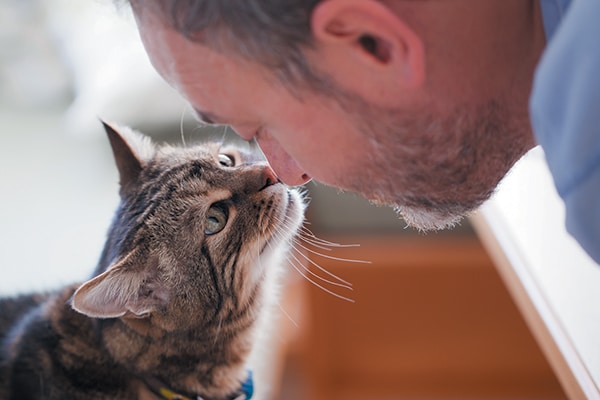
Why do cats have wet noses?
The skin around the nostrils is called the rhinarium, and the sweat glands in the rhinarium create moisture. The inner tear duct also creates drainage which contributes to a wet nose. Humans sweat to regulate their body temperature and a cat can use the moisture from its nose - by evaporation - to achieve the same result.
Cats are meticulous groomers and, by licking themselves, they automatically add a layer of moisture to the nose. Saliva can dry out quickly, but this is one of the reasons why a cat's nose is wet.
A wet cat's nose can also be due to something else simple: the bowl of water. A bowl of clean, clear water can make it difficult for some cats to determine the depth of the liquid. When going to drink, the kitten may inadvertently dip its nose into the bowl, leaving it with a revealing wet nose.
A wet cat's nose versus a dry cat's nose
A dry cat's nose is just as common as a wet cat's nose, and is generally not a cause for alarm. If a cat spends a large part of its time in full sun, it may have a dry nose. It also happens to us humans when we expose ourselves to the sun! A dry cat nose can also appear if a cat spends a lot of time near a non-solar heat source such as a chimney or heating duct.
What other factors can affect a wet cat's nose compared to a dry cat's nose?
The humidity level of a nose is also influenced by the humidity level of the air. This is especially true during the winter months in many places.
The main reason a cat's nose skin is too dry or cracked is dehydration, which is caused by a decrease in water intake or an increase in fluid loss. Consult your veterinarian if you think your cat is dehydrated. Other signs of dehydration in cats include the following:
Sunken eyes
Lethargy
Loss of appetite
Dry mouth
Depression
High heart rate
Panting
The elasticity of the skin
When is a wet cat's nose a cause for concern, and how to treat it?
Ingrid King, a cat expert and certified veterinary journalist, says, "Although people seem to think that a wet nose is a sign of health [and] a dry, warm nose is a sign of illness, that's not true. Cats' body temperature is naturally higher than that of humans, so most of the time a cat will feel warm to the touch".
"A cat's nose can go back and forth between being wet and dry several times a day, depending on the cat's activity", Ingrid continues, "Did your cat just eat or wash? His nose will be wet. Has he been lying in the sun or is the air in your home extremely dry? His nose will be dry. Your cat's nose will only be an indicator of his health if you notice something abnormal, such as peeling skin, bumps or a runny nose".
Is it a wet nose or a runny nose?
A runny nose, unlike a wet cat's nose, can be a concern and should be examined by a veterinarian to rule out diseases such as upper respiratory tract infections (URIs). Various bacterial and viral infections can cause upper respiratory tract infections, including feline herpesvirus and feline chlamydia.
The most common symptoms of upper respiratory infections are as follows:
Excessive nasal discharge
Sniffing and sneezing
Red and watery eyes
Colored and bubbly nasal discharge
A runny nose can also signal an allergy and, after a thorough discussion of the symptoms and daily environment with a veterinarian, can result from simple changes in food, bedding or other environmental factors.
The last word on a cat's wet nose
Here again, a healthy cat's nose generally goes from wet to dry throughout the day. It is important to know your cat's "normals" to be aware of any deviation, whether it is a wet cat's nose or anything else. A sudden change in humidity levels, accompanied by symptoms, can indicate illness, and a veterinarian should examine it.
You see, some cats have naturally drier noses than others, and the temperature and humidity levels of most cats' noses vary throughout the day. Therefore, one of the best ways for us humans to decide whether or not to worry is to know what is the normal "state of the nose" for our kittens.

Why do cats have wet noses?
The skin around the nostrils is called the rhinarium, and the sweat glands in the rhinarium create moisture. The inner tear duct also creates drainage which contributes to a wet nose. Humans sweat to regulate their body temperature and a cat can use the moisture from its nose - by evaporation - to achieve the same result.
Cats are meticulous groomers and, by licking themselves, they automatically add a layer of moisture to the nose. Saliva can dry out quickly, but this is one of the reasons why a cat's nose is wet.
A wet cat's nose can also be due to something else simple: the bowl of water. A bowl of clean, clear water can make it difficult for some cats to determine the depth of the liquid. When going to drink, the kitten may inadvertently dip its nose into the bowl, leaving it with a revealing wet nose.
A wet cat's nose versus a dry cat's nose
A dry cat's nose is just as common as a wet cat's nose, and is generally not a cause for alarm. If a cat spends a large part of its time in full sun, it may have a dry nose. It also happens to us humans when we expose ourselves to the sun! A dry cat nose can also appear if a cat spends a lot of time near a non-solar heat source such as a chimney or heating duct.
What other factors can affect a wet cat's nose compared to a dry cat's nose?
The humidity level of a nose is also influenced by the humidity level of the air. This is especially true during the winter months in many places.
The main reason a cat's nose skin is too dry or cracked is dehydration, which is caused by a decrease in water intake or an increase in fluid loss. Consult your veterinarian if you think your cat is dehydrated. Other signs of dehydration in cats include the following:
Sunken eyes
Lethargy
Loss of appetite
Dry mouth
Depression
High heart rate
Panting
The elasticity of the skin
When is a wet cat's nose a cause for concern, and how to treat it?
Ingrid King, a cat expert and certified veterinary journalist, says, "Although people seem to think that a wet nose is a sign of health [and] a dry, warm nose is a sign of illness, that's not true. Cats' body temperature is naturally higher than that of humans, so most of the time a cat will feel warm to the touch".
"A cat's nose can go back and forth between being wet and dry several times a day, depending on the cat's activity", Ingrid continues, "Did your cat just eat or wash? His nose will be wet. Has he been lying in the sun or is the air in your home extremely dry? His nose will be dry. Your cat's nose will only be an indicator of his health if you notice something abnormal, such as peeling skin, bumps or a runny nose".
Is it a wet nose or a runny nose?
A runny nose, unlike a wet cat's nose, can be a concern and should be examined by a veterinarian to rule out diseases such as upper respiratory tract infections (URIs). Various bacterial and viral infections can cause upper respiratory tract infections, including feline herpesvirus and feline chlamydia.
The most common symptoms of upper respiratory infections are as follows:
Excessive nasal discharge
Sniffing and sneezing
Red and watery eyes
Colored and bubbly nasal discharge
A runny nose can also signal an allergy and, after a thorough discussion of the symptoms and daily environment with a veterinarian, can result from simple changes in food, bedding or other environmental factors.
The last word on a cat's wet nose
Here again, a healthy cat's nose generally goes from wet to dry throughout the day. It is important to know your cat's "normals" to be aware of any deviation, whether it is a wet cat's nose or anything else. A sudden change in humidity levels, accompanied by symptoms, can indicate illness, and a veterinarian should examine it.
Is Vegan Cat Food Okay?
Given the fact that cats are obligate carnivores, creatures that feed primarily or exclusively on animal matter for their health and well-being, is becoming a vegetarian a good idea? Is vegan cat food okay?
Is vegan cat food okay? A vet weighs iAs cats are obligate carnivores, creatures that feed primarily or exclusively on animal matter for their health and well-being, is becoming a vegetarian a good idea? Are vegan cat foods acceptable?
Is vegan cat food acceptable? A veterinarian weighs the pros and cons.
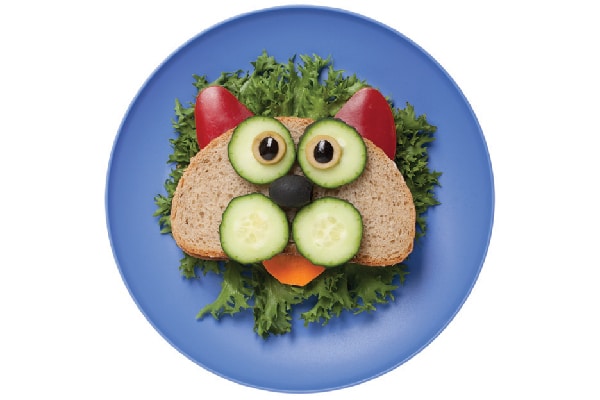
The risks of vegan cat food
The risks of a vegetarian or vegan diet for cats include insufficient total protein intake, an imbalance of amino acids such as taurine or essential fatty acids such as arachidonic acid, and a deficiency of vitamins and minerals that are obtained ideally, or solely, from meat or other animal products.
Health Risks of Vegan and Vegetarian Cat Foods
These dietary problems can lead to serious and sometimes irreversible pathologies, according to Jennifer Larsen, DVM, M.D., M.D., a certified veterinary nutritionist and professor of clinical nutrition at the University of California at Davis Veterinary School. The problem most often mentioned by veterinarians is taurine related dilated cardiomyopathy (an enlarged heart with weak contractions and low pumping capacity), but low taurine levels can also lead to reproductive failure, growth retardation and eye problems, she adds.
"We saw a case of a cat that almost died from taurine deficiency," says Dr. Larsen. "The owners were feeding their cat vegan kibble, a commercially available vegan diet, and they were mixing it with cooked chicken breast for some reason, but there wasn't enough taurine for the cat, obviously, and that resulted in a near-death experience for the animal.
Vignette: Photograph ©Gabriele Grassl | Getty Images.
Is vegan cat food okay? A vet weighs iAs cats are obligate carnivores, creatures that feed primarily or exclusively on animal matter for their health and well-being, is becoming a vegetarian a good idea? Are vegan cat foods acceptable?
Is vegan cat food acceptable? A veterinarian weighs the pros and cons.

The risks of vegan cat food
The risks of a vegetarian or vegan diet for cats include insufficient total protein intake, an imbalance of amino acids such as taurine or essential fatty acids such as arachidonic acid, and a deficiency of vitamins and minerals that are obtained ideally, or solely, from meat or other animal products.
Health Risks of Vegan and Vegetarian Cat Foods
These dietary problems can lead to serious and sometimes irreversible pathologies, according to Jennifer Larsen, DVM, M.D., M.D., a certified veterinary nutritionist and professor of clinical nutrition at the University of California at Davis Veterinary School. The problem most often mentioned by veterinarians is taurine related dilated cardiomyopathy (an enlarged heart with weak contractions and low pumping capacity), but low taurine levels can also lead to reproductive failure, growth retardation and eye problems, she adds.
"We saw a case of a cat that almost died from taurine deficiency," says Dr. Larsen. "The owners were feeding their cat vegan kibble, a commercially available vegan diet, and they were mixing it with cooked chicken breast for some reason, but there wasn't enough taurine for the cat, obviously, and that resulted in a near-death experience for the animal.
Vignette: Photograph ©Gabriele Grassl | Getty Images.
Cats Are Obligate Carnivores — What That Means & Why It Matters
Next time you catch your cat napping in the afternoon sun, think of the tiger. Think lion. You wouldn't think a lion or tiger would eat a plant-based diet, would you? Of course you wouldn't! Big cats are obligate carnivores, which means that eating meat is absolutely essential to their biological survival.
Your little tiger is not much different. Domestic cats are true obligate carnivores who must eat meat in order for their bodies to receive certain compounds that are vital to their long-term health and well-being.
Cats need more protein than either humans or dogs, according to Deborah E. Linder, DVM, MS, Certified Veterinary Nutritionist, Director of the Animal Obesity Clinic at the Cummings School of Veterinary Medicine at Tufts University. Kittens need more protein than most other animals, and adult cats need two to three times more protein than dogs, she adds.
Vegetarian or vegan diets don't provide the amino acids needed for good feline health and are too rich in carbohydrates that cats can't assimilate, according to Marla McGeorge, JD, DVM, a feline consultant in Portland, Oregon.
(Is being vegan healthy for YOU? Come find out >>)
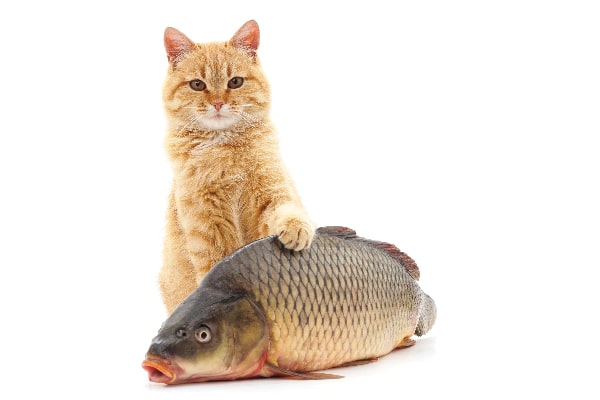
Before going any further, let's clarify what exactly are the obligatory carnivores :
Compulsory (adjective): ob-li-gate - biologically essential for survival - limited to a particularly characteristic way of life
Carnivore (noun): car-ni-vore - an animal that feeds primarily or exclusively on animal matter.
Essential nutrients for cats
Taurine is a vital amino acid that cats cannot obtain from any other source than animal protein. Cats cannot make taurine from other amino acids like most mammals can," said Joe Bartges, DVM, PhD, DACVIM, DACVN, professor of internal medicine and nutrition at the University of Georgia College of Veterinary Medicine.
According to Dr. Linder, when cats are fed a diet too low in taurine, they can suffer from retinal degeneration, dilated cardiomyopathy and reproductive problems. While all cat foods should contain taurine, she says, the total amount in the diet is not the only important factor. Other ingredients in the diet can affect how taurine is broken down in the gut and its bioavailability to the cat, so it's important to feed a diet that has been carefully formulated and tested, she adds.
Cats also lack the enzyme needed to make their own arginine, another amino acid found in animal proteins, so more of it must be provided in their diet, according to Dr. Linder. Arginine is involved in the removal of ammonia from the body; if this function is impaired, cats can lose weight, vomit, suffer neurological problems and even die.
A diet rich in meat also provides vitamin A, a nutrient that cats are unable to convert from beta-carotene, as well as other key nutrients, including arachidonic acid and vitamin B12, which cannot be obtained in sufficient quantities from plant foods, according to Dr. Bartges. Without a regular supply of these nutrients, cats can suffer from liver and heart problems, not to mention skin irritation and hearing loss, he says.
Feline diets also require niacin and vitamin D3, according to Dr. Linder.
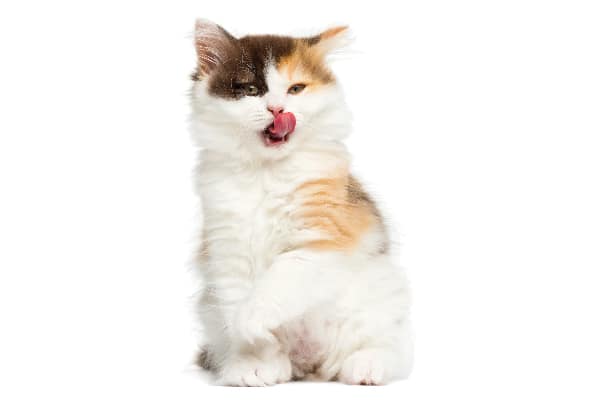
As for which animal protein is best for these obligate carnivores - beef, chicken or fish - there is no better type, according to Tony Buffington, DVM, PhD, DACVN, professor emeritus of veterinary clinical sciences at the Ohio State University College of Veterinary Medicine.
In fact, it doesn't matter whether a cat gets its protein from a dry or wet food, as long as it eats that food and meets its nutritional requirements," says Dr. Buffington. The key is to review the label. Labels on commercial cat foods must indicate that the product is formulated to meet the nutritional profiles of the Association of American Feed Control Officials and that it meets their guidelines for nutritionally complete, balanced and age-appropriate nutrition for your cat. Of course, if your cat has specific nutritional needs, always follow your veterinarian's recommendations," he adds.
Your little tiger is not much different. Domestic cats are true obligate carnivores who must eat meat in order for their bodies to receive certain compounds that are vital to their long-term health and well-being.
Cats need more protein than either humans or dogs, according to Deborah E. Linder, DVM, MS, Certified Veterinary Nutritionist, Director of the Animal Obesity Clinic at the Cummings School of Veterinary Medicine at Tufts University. Kittens need more protein than most other animals, and adult cats need two to three times more protein than dogs, she adds.
Vegetarian or vegan diets don't provide the amino acids needed for good feline health and are too rich in carbohydrates that cats can't assimilate, according to Marla McGeorge, JD, DVM, a feline consultant in Portland, Oregon.
(Is being vegan healthy for YOU? Come find out >>)
Obligate carnivores — what exactly does that mean?

Before going any further, let's clarify what exactly are the obligatory carnivores :
Compulsory (adjective): ob-li-gate - biologically essential for survival - limited to a particularly characteristic way of life
Carnivore (noun): car-ni-vore - an animal that feeds primarily or exclusively on animal matter.
Essential nutrients for cats
Taurine is a vital amino acid that cats cannot obtain from any other source than animal protein. Cats cannot make taurine from other amino acids like most mammals can," said Joe Bartges, DVM, PhD, DACVIM, DACVN, professor of internal medicine and nutrition at the University of Georgia College of Veterinary Medicine.
According to Dr. Linder, when cats are fed a diet too low in taurine, they can suffer from retinal degeneration, dilated cardiomyopathy and reproductive problems. While all cat foods should contain taurine, she says, the total amount in the diet is not the only important factor. Other ingredients in the diet can affect how taurine is broken down in the gut and its bioavailability to the cat, so it's important to feed a diet that has been carefully formulated and tested, she adds.
Cats also lack the enzyme needed to make their own arginine, another amino acid found in animal proteins, so more of it must be provided in their diet, according to Dr. Linder. Arginine is involved in the removal of ammonia from the body; if this function is impaired, cats can lose weight, vomit, suffer neurological problems and even die.
A diet rich in meat also provides vitamin A, a nutrient that cats are unable to convert from beta-carotene, as well as other key nutrients, including arachidonic acid and vitamin B12, which cannot be obtained in sufficient quantities from plant foods, according to Dr. Bartges. Without a regular supply of these nutrients, cats can suffer from liver and heart problems, not to mention skin irritation and hearing loss, he says.
Feline diets also require niacin and vitamin D3, according to Dr. Linder.
What protein is best for cats?

As for which animal protein is best for these obligate carnivores - beef, chicken or fish - there is no better type, according to Tony Buffington, DVM, PhD, DACVN, professor emeritus of veterinary clinical sciences at the Ohio State University College of Veterinary Medicine.
In fact, it doesn't matter whether a cat gets its protein from a dry or wet food, as long as it eats that food and meets its nutritional requirements," says Dr. Buffington. The key is to review the label. Labels on commercial cat foods must indicate that the product is formulated to meet the nutritional profiles of the Association of American Feed Control Officials and that it meets their guidelines for nutritionally complete, balanced and age-appropriate nutrition for your cat. Of course, if your cat has specific nutritional needs, always follow your veterinarian's recommendations," he adds.
Can Cats Eat Bread?
I never thought I'd find myself Googling "Can cats eat bread?", but I did it recently while shouting "Don't eat that!" to my sneaky kitten. During a recent series of product tests in my test kitchen, I discovered that my cat was trying to steal a slice of gluten-free bread. He jumped on the counter and started licking each slice of bread, carefully arranged for human consumption (well, at least it was intended for human consumption).
At first I thought it was the butter spread on the bread, but he was stealing slices of ordinary bread. He was trying to pick up a piece of bread by the crust and bring it back to the ground. I was shocked by this behavior because he had only managed to steal chicken nuggets from the counter before. So, do cats like bread? Is it a secret that they hide from us? Can cats even eat bread?
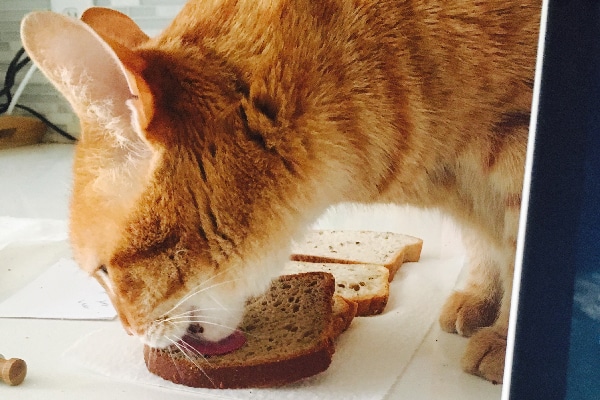
When it comes to the question "Can cats eat bread? I'm not alone. My friends have told me about their carbohydrate loving cats. One of them told me about his cat who loved to steal the crust off pizzas to get to the inside of the dough. Another was in love with a particular brand of pancake mix - cooked dough and raw dough. My friends couldn't figure out if it was the filling on the bread (like butter, cheese or pepperoni) or the bread itself. They too wondered if cats could eat bread and if the bread was safe for them.
Can cats eat bread? Is it dangerous for cats?
Is bread safe for cats? Fortunately, bread is not so dangerous for cats. So, the answer to the question "Can cats eat bread?" is technically "yes" - but it's not really recommended. Cats don't need bread in their diet.
But can cats eat bread that is not baked?
Dr. Heather Loenser, senior veterinarian at the American Animal Hospital Association, warns about the dangers of eating raw or leavened bread dough. "The biggest danger for cats would be eating raw dough because the fermentation of yeast in the dough can cause the dough to expand in the cat's stomach," she warns. "This can cause severe abdominal pain and, theoretically, cause a perforation of the stomach."
Dr Loenser adds: "Because alcohol is a by-product of fermentation, alcohol poisoning is possible. The signs would be vomiting, diarrhoea, lethargy, difficulty walking or the impression of being drunk. Fortunately, few cats seem to be attracted to eating raw bread dough - it is much more of a problem with dogs".
Can cats eat bread with certain fillings or supplements?
When we ask ourselves "Can cats eat bread?", we also run into problems because of what is on or in the bread. We have already asked if cats can eat cheese, a common filling on bread. Can cats eat cheese? Yes, but only in moderation, because cats are lactose intolerant after the birth of their kittens.
But can cats eat bread with non-dairy fillings? "Other potential ingredients in bread that could be a problem are garlic and onions, which can cause damage to red blood cells and anemia," says Dr. Loenser. Even in small amounts, garlic can cause stomach upset, vomiting and diarrhea in cats. Consult a veterinarian if you think your cat has consumed garlic.
At first I thought it was the butter spread on the bread, but he was stealing slices of ordinary bread. He was trying to pick up a piece of bread by the crust and bring it back to the ground. I was shocked by this behavior because he had only managed to steal chicken nuggets from the counter before. So, do cats like bread? Is it a secret that they hide from us? Can cats even eat bread?
Can Cats Eat Bread and Other Breaded Products?

When it comes to the question "Can cats eat bread? I'm not alone. My friends have told me about their carbohydrate loving cats. One of them told me about his cat who loved to steal the crust off pizzas to get to the inside of the dough. Another was in love with a particular brand of pancake mix - cooked dough and raw dough. My friends couldn't figure out if it was the filling on the bread (like butter, cheese or pepperoni) or the bread itself. They too wondered if cats could eat bread and if the bread was safe for them.
Can cats eat bread? Is it dangerous for cats?
Is bread safe for cats? Fortunately, bread is not so dangerous for cats. So, the answer to the question "Can cats eat bread?" is technically "yes" - but it's not really recommended. Cats don't need bread in their diet.
But can cats eat bread that is not baked?
Dr. Heather Loenser, senior veterinarian at the American Animal Hospital Association, warns about the dangers of eating raw or leavened bread dough. "The biggest danger for cats would be eating raw dough because the fermentation of yeast in the dough can cause the dough to expand in the cat's stomach," she warns. "This can cause severe abdominal pain and, theoretically, cause a perforation of the stomach."
Dr Loenser adds: "Because alcohol is a by-product of fermentation, alcohol poisoning is possible. The signs would be vomiting, diarrhoea, lethargy, difficulty walking or the impression of being drunk. Fortunately, few cats seem to be attracted to eating raw bread dough - it is much more of a problem with dogs".
Can cats eat bread with certain fillings or supplements?
When we ask ourselves "Can cats eat bread?", we also run into problems because of what is on or in the bread. We have already asked if cats can eat cheese, a common filling on bread. Can cats eat cheese? Yes, but only in moderation, because cats are lactose intolerant after the birth of their kittens.
But can cats eat bread with non-dairy fillings? "Other potential ingredients in bread that could be a problem are garlic and onions, which can cause damage to red blood cells and anemia," says Dr. Loenser. Even in small amounts, garlic can cause stomach upset, vomiting and diarrhea in cats. Consult a veterinarian if you think your cat has consumed garlic.
How to Keep Your Cat Active and Cool During the Summer
Summer is the time to relax and slow down, a time to seek relief from searing temperatures. Cats are geniuses for finding the coolest spots in their homes. Sometimes they stretch out on cold bathroom tiles or in places where there are refreshing cross breezes. Although kitties are not as active in hot weather as they are when it's cooler, they still need to do more than nap. Encourage your cats to try these six cool activities that stimulate while encompassing their natural behaviors.summer is a time to relax and slow down, a time to seek relief from hot weather. Cats are geniuses at finding the coolest places in their homes. Sometimes they lie on cold bathroom tiles or in places where there are refreshing cross breezes. Although kittens are not as active in hot weather as they are in cooler weather, they still need more than a nap. Encourage your cats to try these six cool activities that stimulate them while embracing their natural behaviors.

1. Ice cubes in meat broth
Help keep your cat cool and entertained with these easy-to-prepare meat broth ice cubes. Start from scratch and cook your own broth, as commercial broths are flavoured with sodium, garlic, spices and other ingredients that are toxic to cats. You only need two ingredients: raw meat and fresh water. Place your cat's favourite meat, along with the bones, in a large saucepan, cover with water and bring to a boil. Cooking time will vary depending on the meat and the amount of water. Do not add anything to the mixture, just meat and water.
After preparing the broth, remove the fat and pour the broth into ice cube trays. Broth cubes are most appetizing when a piece of meat is added to each cube before being placed in the freezer. Once they are frozen, put a few cubes in a large shallow bowl for your cat. Every kitten in the house deserves its own bowl with two frozen meat cubes. Cats enjoy tasting the melting broth while getting the "prize" of the meat.
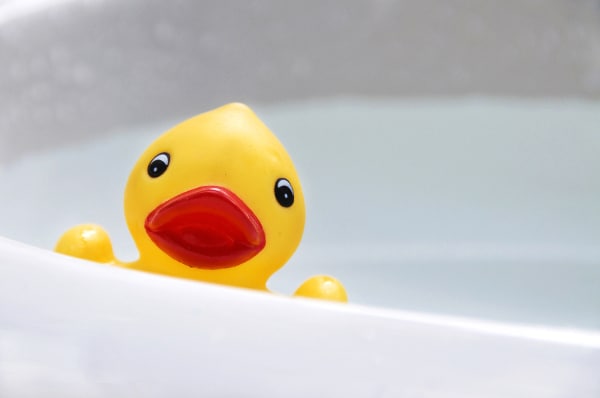
2. Water toys
Water can be made more attractive with toys. Float hollow plastic balls and other waterproof toys in bowls, fountains and sinks. Your cat will love to play with bats and try to catch elusive objects. Make sure the toys are safe, cannot be swallowed or have parts that can be bitten.
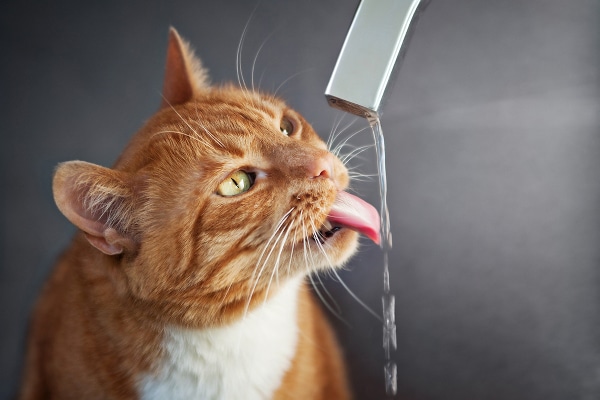
3. Water games
Many cats like to drink and tap water. Give you and your feline companions motion-sensitive water faucets that easily attach to kitchen and bathroom faucets. Although designed for humans, most cats quickly understand how to activate them by head movements and paw strokes.
Pet water fountains are also popular with most kittens. You can choose from a variety of commercial models, including decorative and expensive ceramic models, as well as inexpensive plastic models. All pet water fountains should be cleaned at least once a week.
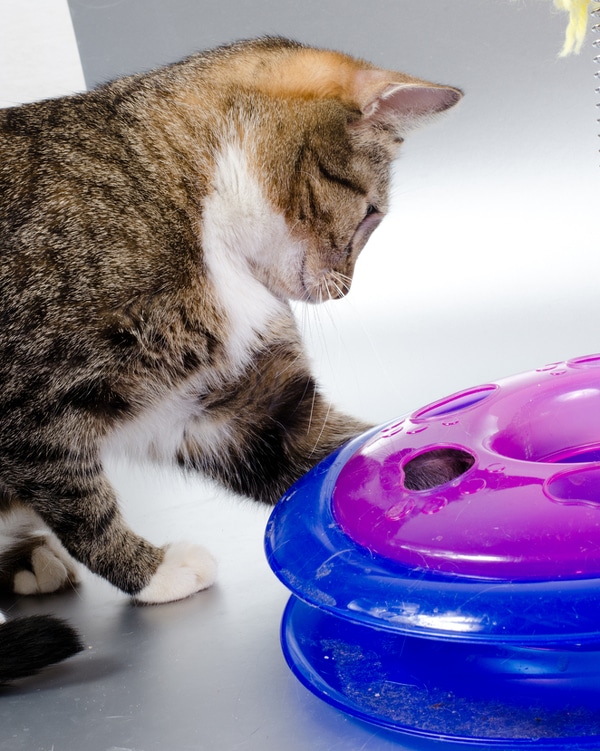
4. Floor toys
Cats are individuals - everyone has their own preferences when it comes to toys. Many like ball toys, while others like to spend time fishing for toys and treats from puzzle boxes, feeders and toys. Some choose to put their favourite toys in their mouths or chase them across the floor, while others prefer to stalk, pounce and catch toys dragged by their peers.
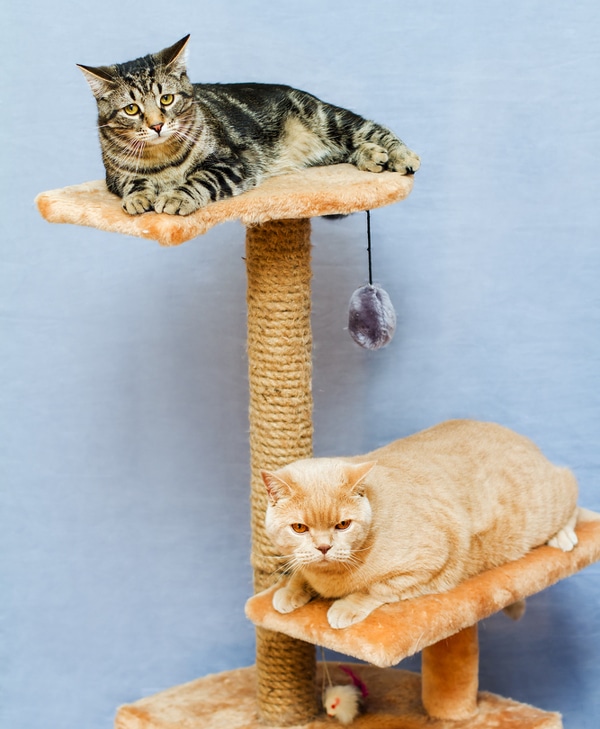
5. Vertical territory
If cats could write, they would put large cat trees and apartments at the top of their list of must-haves. They would also ask you to place them near screened windows. These are perfect places to observe what's going on in the neighborhood while enjoying a cross breeze and taking a nap after a play session. Also incorporate vertical territory into your cat's play sessions by dragging over posts, feathers and ribbons for your kitten to chase.
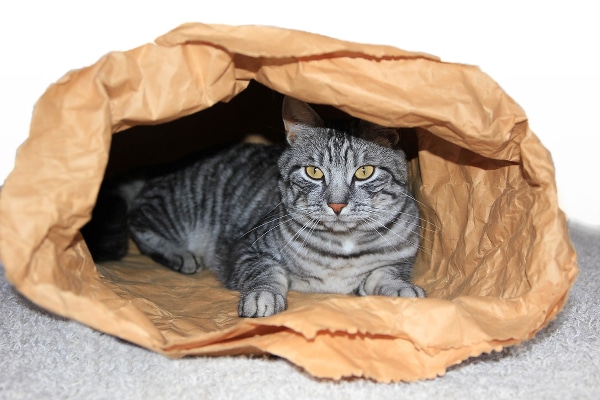
6. Hiding places
Most kittens like to nap, play and hide under furniture and in bags, boxes and tunnels. Bags must be safe - use only paper bags without handles. Make these places more enjoyable by angling them to catch a crosswind. Encourage your cat to use them for something other than hiding and napping by throwing her favourite toys and rolling treats in them.
Know when it's time to play
Choose the right times to play. Avoid vigorous gambling in hot weather - heat can cause serious health problems. Instead, encourage gambling in the mornings and evenings when it's cooler. You may be able to attract your cat by rubbing her favourite toys with treats and catnip. Also incorporate play into meals by putting food and treats in puzzle boxes and toys.
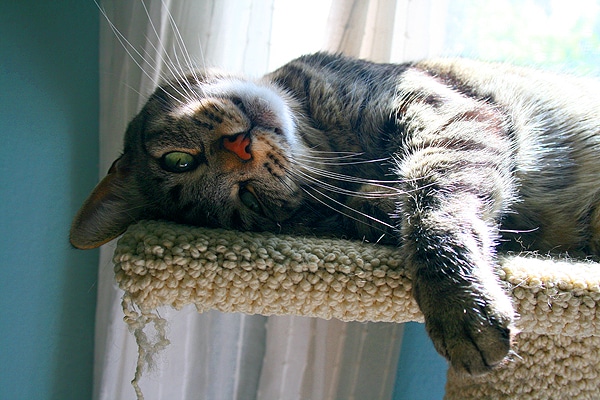
In addition to the dangers of overheating, know your cat's limits when playing with him. Older cats and cats with disabilities do not play as intensely or as long as young adults and kittens. Even kittens that like to play intensely should not be pushed to the point of panting and breathing heavily. Tailor play sessions to the individual: they can be as simple as hitting sticks and ice cubes with broth, or as chase games.

1. Ice cubes in meat broth
Help keep your cat cool and entertained with these easy-to-prepare meat broth ice cubes. Start from scratch and cook your own broth, as commercial broths are flavoured with sodium, garlic, spices and other ingredients that are toxic to cats. You only need two ingredients: raw meat and fresh water. Place your cat's favourite meat, along with the bones, in a large saucepan, cover with water and bring to a boil. Cooking time will vary depending on the meat and the amount of water. Do not add anything to the mixture, just meat and water.
After preparing the broth, remove the fat and pour the broth into ice cube trays. Broth cubes are most appetizing when a piece of meat is added to each cube before being placed in the freezer. Once they are frozen, put a few cubes in a large shallow bowl for your cat. Every kitten in the house deserves its own bowl with two frozen meat cubes. Cats enjoy tasting the melting broth while getting the "prize" of the meat.

2. Water toys
Water can be made more attractive with toys. Float hollow plastic balls and other waterproof toys in bowls, fountains and sinks. Your cat will love to play with bats and try to catch elusive objects. Make sure the toys are safe, cannot be swallowed or have parts that can be bitten.

3. Water games
Many cats like to drink and tap water. Give you and your feline companions motion-sensitive water faucets that easily attach to kitchen and bathroom faucets. Although designed for humans, most cats quickly understand how to activate them by head movements and paw strokes.
Pet water fountains are also popular with most kittens. You can choose from a variety of commercial models, including decorative and expensive ceramic models, as well as inexpensive plastic models. All pet water fountains should be cleaned at least once a week.

4. Floor toys
Cats are individuals - everyone has their own preferences when it comes to toys. Many like ball toys, while others like to spend time fishing for toys and treats from puzzle boxes, feeders and toys. Some choose to put their favourite toys in their mouths or chase them across the floor, while others prefer to stalk, pounce and catch toys dragged by their peers.

5. Vertical territory
If cats could write, they would put large cat trees and apartments at the top of their list of must-haves. They would also ask you to place them near screened windows. These are perfect places to observe what's going on in the neighborhood while enjoying a cross breeze and taking a nap after a play session. Also incorporate vertical territory into your cat's play sessions by dragging over posts, feathers and ribbons for your kitten to chase.

6. Hiding places
Most kittens like to nap, play and hide under furniture and in bags, boxes and tunnels. Bags must be safe - use only paper bags without handles. Make these places more enjoyable by angling them to catch a crosswind. Encourage your cat to use them for something other than hiding and napping by throwing her favourite toys and rolling treats in them.
Know when it's time to play
Choose the right times to play. Avoid vigorous gambling in hot weather - heat can cause serious health problems. Instead, encourage gambling in the mornings and evenings when it's cooler. You may be able to attract your cat by rubbing her favourite toys with treats and catnip. Also incorporate play into meals by putting food and treats in puzzle boxes and toys.

In addition to the dangers of overheating, know your cat's limits when playing with him. Older cats and cats with disabilities do not play as intensely or as long as young adults and kittens. Even kittens that like to play intensely should not be pushed to the point of panting and breathing heavily. Tailor play sessions to the individual: they can be as simple as hitting sticks and ice cubes with broth, or as chase games.
Powered by Blogger.
About Me
The Top 10 Reasons Why You Should Adopt a Ragdoll Cat
Ragdoll cats are known as the sweetest, most affectionate cats around. They are a cross between a domesticated house cat and a wild bobcat. ...
.jpg)
